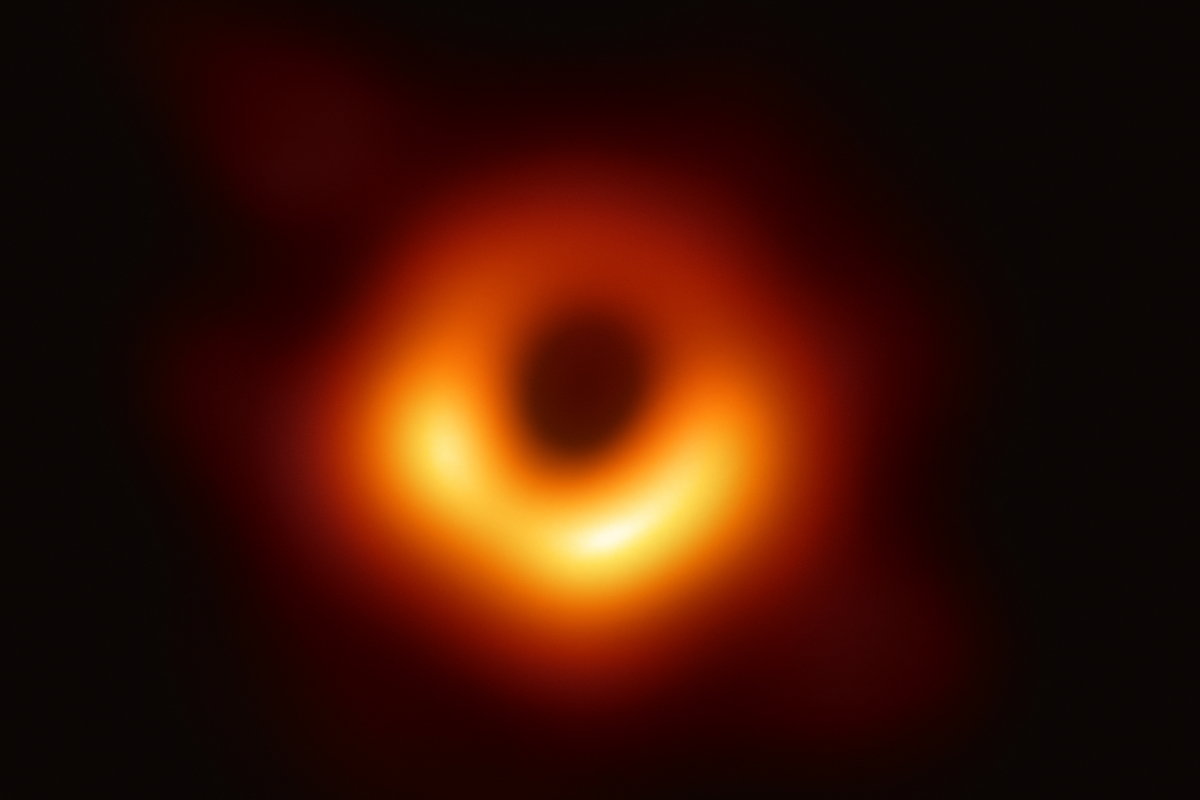recent
Scientific Progress and the Culture Wars
Luckily for sane people everywhere, project insiders have so far refrained from going to the media and dishing on which team members did or didn’t pull their own weight.

On April 10, 2019, an international team of scientists from dozens of research institutions involved in the Event Horizon Telescope collaboration published the first direct image of a black hole. This groundbreaking achievement, representing tremendous progress in both fundamental astrophysics as well as the many technologies adopted and advanced for this work, received acclaim around the world and throughout the internet. Scientists had shed metaphorical light on the literal darkest objects in the universe, and they had done it by combining signals from radio telescopes at opposite ends of the globe, a technical achievement with far-reaching implications in many areas of science. (Indeed, I believe that my own research specialty, quite remote from astrophysics, will draw upon some of the fruits of this imaging technique.)
Of course, no good thing can last, and people soon found a way to turn this scientific accomplishment into a cultural flashpoint over the issue of gender equity in science. It began on the morning of the announcement, when Twitter activists chided news outlets for not paying attention to Dr. Katie Bouman, a woman who worked on some of the algorithms used in this research. Dr. Bouman, a recent PhD in engineering and computer science who will start a faculty position at the California Institute of Technology (Caltech) this coming autumn, quickly attracted attention, being heralded on the internet as the public face and pivotal innovator of this project, and a beacon for women in STEM.
This photo wouldn't be possible without Katie Bouman's work, watch her TEDTalk on how this photo came to be: https://t.co/I9ixuwhdJP
— Girls Who Code (@GirlsWhoCode) April 10, 2019
#EHTblackhole
Someone promptly created a Wikipedia page for her, and it is already more extensive than the Wikipedia pages for many Caltech professors with far longer records of accomplishment. At least one politician made a point of publicly congratulating her. Inevitably, then, there was a backlash against singling out one member of a large collaboration and using the hoopla to scold the world about sexism. People on Reddit soon proclaimed that they had found the “real” hero of this scientific breakthrough, a graduate student whose activity on Github (a website that people use for sharing software in collaborative projects) apparently exceeds that of Dr. Bouman. (Never mind that productivity is about far more than just the size of the files one uploads, and most of his uploads were data rather than code.) Consequently, within 48 hours of a wondrous announcement, CNN was running articles about “trolls.” How did something so great become so terrible?
To undermine Katherine Bouman's role in the Black Hole photo, trolls held up a white man as the real hero -- until he fought back https://t.co/HhyqiNrRua pic.twitter.com/3KRPMeX144
— CNN International (@cnni) April 12, 2019
We certainly can’t blame Bouman or Andrew Chael (the graduate student). Neither of them asked to be drafted into someone else’s culture war, and Bouman quickly made a Facebook post reminding the world that this project was the work of a large team. Chael likewise took to social media, acknowledging the team effort and asking people to not use him as a cudgel with which to beat his accomplished colleague. A partisan might accuse either Chael or Bouman of false modesty, but there is no way of adjudicating that charge without detailed insider information.
Luckily for sane people everywhere, project insiders have so far refrained from going to the media and dishing on which team members did or didn’t pull their own weight. What we do know is that Bouman has an impressive CV that lists many articles in prestigious journals and conferences. (Note that in many engineering fields conference papers carry weight comparable to journal articles in other disciplines.) We also know that she is about to start a coveted tenure-track professorship at Caltech this fall. Likewise, Chael’s CV shows an impressive track record for his career stage, and he is on track to soon receive a PhD from Harvard. There’s no basis to judge either of them underperforming, nor to conclude that either of them needs attention to compensate for being unfairly held back in their careers thus far.
As to the people who actually stirred this up, much of the problem obviously lies with the temptations of the wider culture war. There are ample justifications for recognizing accomplished women scientists; one needn’t subscribe to every inaccurate narrative about gender gaps in STEM to think that it’s nice to highlight role models for young women. However, singling out one individual from a large team (which reportedly includes 40 other women) denies the other team members their deserved recognition, possibly arousing resentment from co-workers. Also, justifying this lopsided attention as a remedy for some sort of social ill makes it harder to highlight anyone else. Even deserved attention for someone like Andrew Chael can now be tarred as part of a backlash.
Likewise, there are good reasons to push back against inaccurate narratives about gender gaps in STEM—I have certainly done so! However, what is to be gained by picking one scientist and using a worthless metric (size of file uploads) to build him up at the expense of another good scientist? We can question bad narratives about gender and STEM careers without calling into doubt the good work of Bouman, and without drafting Chael into a fight that he sought no part of. Yes, Bouman did give a TED Talk about the work, making herself a face of the project, but she never sought to be the face of the project, and she should not be maligned as some sort of glory hog. Most importantly, the other 198 people on the project (including many women at all career stages) certainly don’t deserve to have their fine work turned into a culture war battlefield.
But there’s more to this row than just the bad temptations of culture war. There’s also a fundamental misunderstanding of how large research projects work. I freely acknowledge that some people really do have better ideas than others, really do have greater talent, and really do accomplish greater things. However, the most brilliant individual accomplishments still happen on an individual scale, and on timelines as variable as the individuals involved. Nobody gambles a project of this scope on individuals finding surprising insights. Combining data from multiple radio telescopes, processing the data appropriately, and interpreting it in light of the best possible astrophysical models requires expertise in numerous technologies and techniques, and people from each team and sub-team must make substantial progress within the time frame of the project.

The type of progress that you plan for is not a great “Eureka!” moment (no sane person gambles 200 careers on unpredictable events) but rather foreseeable improvements that might plausibly be made by a large number of talented and well-trained people who work very hard for several years. The outcomes are impressive, but they hardly depend on one person shining brighter than 199 others (especially if that one person is an early-career scientist who has not yet settled into a long-term position and might suddenly change jobs). It’s not about modesty or some ideological denial of brilliance and its significance. Rather, it’s about running a large project in a way that has a chance of succeeding.
The other great achievement on a project like this, beyond the technical accomplishments of each science and technology sub-team, is getting all of the pieces to work together. In an instrument with several hardware components, each must be compatible with the others. A team responsible for a piece of the data analysis must thoroughly understand the instrument producing the data, and must also know which aspects of the instrument’s performance are not well-understood or not optimized, so that their data analysis does not rely on that unknown variable.
A good analogy might be trying to get your laptop to communicate with a friend’s document scanner via Wi-Fi. Your friend has everything configured in a particular way, has spent a lot of time playing with security settings, and uses a different operating system than you. Can you make it work? Probably. Will it take some hard work? Quite possibly. A team like the Event Horizon Telescope collaboration has to work at least as hard on integrating many different instruments and algorithms as on developing and improving the instruments and algorithms. This makes it meaningless for an outsider to conclude which individual was or wasn’t pivotal on such a project. The greatest unsung heroes of this work are almost assuredly the people who coordinated between the many sub-teams.
There are more of us. Katie's algorithm, despite the media's stance, was not used to produce this image. There were three algorithms used and combined to form the final image, and a team of 40 scientists part of that aspect of the project (including myself and more women).
— Dr. Sara Issaoun (@SaraIssaoun) April 11, 2019
An additional contributor to this mess is the poor quality of science journalism. I have first-hand experience of this, in a somewhat similar situation. Long ago, during my student days, I had a small part in a project that did something of minor note. My university’s press office decided to notify the hometown newspapers of everyone involved, and a reporter duly interviewed me. I was horrified by what they subsequently wrote—the project had some slight relevance to environmental issues, but the newspaper drastically exaggerated the environmental significance, fabricated quotes, and also exaggerated my role. Even worse, someone on my team had a friend who read the article and sent him a copy. Thankfully, they recognized that the reporter was at fault, but it still took some time for the teasing to subside in the lab. I’m just thankful that internet access was not yet ubiquitous in those days.
This case is not so different: Media outlets with little understanding of how large science projects work played up an individual’s role in a team effort, and worked to fit the story into a political narrative (women in science in the present case, environmental issues in my case). The biggest difference is that I just had to deal with a few jokes in the lab, rather than a barrage of fake social media accounts mocking me and pitting me against a colleague. Things are surely worse in this era of around-the-clock news cycles and social media outrage, leaving even conscientious journalists with too little time to delve carefully into a story and learn about the various contributors and their roles. After all, the furor began with activists upbraiding news outlets (by name) for not mentioning Bouman, and every second that they didn’t run a story about her was another second for the critical Tweet to get shared more widely.
The next time a large research team announces a great scientific advance, I hope that everyone, regardless of their stance on various social issues, will remember that large research teams rarely have a single pivotal individual. It would be sad if the pattern became that after each big announcement a single photogenic woman or minority is elevated in the name of equity and then torn down by an inevitable backlash. To quote an ancient text and modern song, to everything there is a time, including a time for highlighting role models and questioning narratives about gender gaps. But when scientists are unveiling pictures of black holes, let’s just celebrate the science, and limit critical remarks to technical issues (as befits the process of science). We can fight a culture war some other time.






